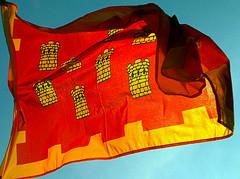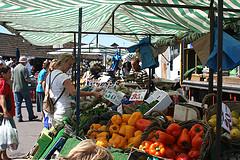Technology
Thursday, January 23rd, 2014 There are different crops that can be used to develop silages, as well as by-products of fish and other animals making it possible to make efficient use of the production, we then relate a number of examples of this, with its technology for silage. Types of silages. Sugarcane silage: bud and harvest residues can be used. The cane is a type of farming that has advantages over others since this can remain in the field until you need without losing its nutritional value. According to Necenen 1990, world production of buds of sugarcane is estimated at 60 million t year, of which only 15% is used in animal feed systems, so it is easy to deduce that still is not given the proper use to this so useful by-product, due to the additional cost of storage, which is avoided if this Bud is used for the elaboration of silages. Technology: Chopped particles size cannot be greater than 20 – 30 mm on average.
There are different crops that can be used to develop silages, as well as by-products of fish and other animals making it possible to make efficient use of the production, we then relate a number of examples of this, with its technology for silage. Types of silages. Sugarcane silage: bud and harvest residues can be used. The cane is a type of farming that has advantages over others since this can remain in the field until you need without losing its nutritional value. According to Necenen 1990, world production of buds of sugarcane is estimated at 60 million t year, of which only 15% is used in animal feed systems, so it is easy to deduce that still is not given the proper use to this so useful by-product, due to the additional cost of storage, which is avoided if this Bud is used for the elaboration of silages. Technology: Chopped particles size cannot be greater than 20 – 30 mm on average.
During or after this tamping it should raise the temperature of 45 C. As additive you should be applied by each 0.002 Kg of chopped sugarcane a mixture composed by urea(0.00098%), salt mineral(0.00044%), sodio(0.00014% sulfate) and Zeolita(0.00044%), spread it evenly over layers of cane ground not greater than 10 cm thick. Fish silage: the edible fish yield is only 40%, so per T of fish 0.6T are obtained to be used as animal feed 4. Technology: you can use waste sliced or mashed before adding organic acids and minerals can also be mixed with carbohydrates like Yucca, sweet potato, honey, where the presence of acids from fermentation of carbohydrates reduces the pH thus achieving inhibit the development of microbes 5. Silage acid. Silage of Pope. Corn silage: the procedure is very similar to the cane but with the only difference is that the time of exposure to the Sun should be greater when he joins a legume.

 Carl Sagan was one of the most famous and recognized North American artonomos, his books and theories in particular his book Cosmos would be translated and interpreted in many languages Grancia in all their successful approaches on important topics like the origin of life on our planet, the creation of the universe and extraterrestrial life. This great scientist, who felleciera in 1996 at age 62, always had very much in mind the importance of ethics in their work that is why all their approaches and theories should be based on a total and complete objectivity. According to this always was a supporter of concepts such as the formation and origin of life on Earth is completely linked with extraterrestrial life. This emphasizes that life will always have a corelacion inside the planet and beyond since its origin and formation depends on the sum of the same organic molecules. Moreover, Sagan theorizes about extraterrestrial life drawing on knowledge of life on Earth, its origins and subsequent evolution, to suggest that the substance of life is everywhere, and therefore, any life outside our planet could follow a process similar to ours. The greatest test of his theories about the origin of life on the planet are based that they go beyond the theory of Abiogenesis, refer to a test very specific of the evolution of life from organic molecules is the existence of Europe one of the moons of Jupiter, and Titan the largest satellite of Saturn where easily oceans of what can be very possibly could to be water. Today this theory is very accepted in the average scientific and astronomical, similarly with the evolution of technology aero space it has been shown the veracity of the deSagan approach by which his theory about the origin of life here and there outside is by no means outrageous, is more fairly resembles the natural and evolutionary facts that are really very significant at the time of talk about this complex subject. Always let the concrete plateamiento the origin of life on Earth and beyond is due to a fact known as cosmic inevitability in which the process of evolution and transformation at the molecular level is an inevitable fact, a consequence of the action reaction resulting in the emergence of microscopic life, which subsequently and with much patience will evolve to conceive what today we can see and touch.
Carl Sagan was one of the most famous and recognized North American artonomos, his books and theories in particular his book Cosmos would be translated and interpreted in many languages Grancia in all their successful approaches on important topics like the origin of life on our planet, the creation of the universe and extraterrestrial life. This great scientist, who felleciera in 1996 at age 62, always had very much in mind the importance of ethics in their work that is why all their approaches and theories should be based on a total and complete objectivity. According to this always was a supporter of concepts such as the formation and origin of life on Earth is completely linked with extraterrestrial life. This emphasizes that life will always have a corelacion inside the planet and beyond since its origin and formation depends on the sum of the same organic molecules. Moreover, Sagan theorizes about extraterrestrial life drawing on knowledge of life on Earth, its origins and subsequent evolution, to suggest that the substance of life is everywhere, and therefore, any life outside our planet could follow a process similar to ours. The greatest test of his theories about the origin of life on the planet are based that they go beyond the theory of Abiogenesis, refer to a test very specific of the evolution of life from organic molecules is the existence of Europe one of the moons of Jupiter, and Titan the largest satellite of Saturn where easily oceans of what can be very possibly could to be water. Today this theory is very accepted in the average scientific and astronomical, similarly with the evolution of technology aero space it has been shown the veracity of the deSagan approach by which his theory about the origin of life here and there outside is by no means outrageous, is more fairly resembles the natural and evolutionary facts that are really very significant at the time of talk about this complex subject. Always let the concrete plateamiento the origin of life on Earth and beyond is due to a fact known as cosmic inevitability in which the process of evolution and transformation at the molecular level is an inevitable fact, a consequence of the action reaction resulting in the emergence of microscopic life, which subsequently and with much patience will evolve to conceive what today we can see and touch. Impact Crusher enrolls gravel aggregate market Recently, Zhengzhou Hongxing mechanical equipment Co., Ltd. introduces the new hydraulics crusher, it helps Hongxing freer the transformation from Made in China to Created in China! In order to better serve our customers and meet market demand, Zhengzhou Hongxing Machinery Equipment Co., Ltd. joint with the German company to share the world s most advanced manufacturing technology, combining with China s domestic market demand and technology trends, Hongxing digests and absorbs the original impact crusher machines technical, recently introduce hydraulic series impact crusher, significant savings for the mining investment cost. Crusher has a longer history, compared with the traditional hammer crusher, they are similar in working principle, however, different in the structure and the process. In order to expand the market demand, Zhengzhou hongxing mechanical equipment Co., Ltd. enters the sand and gravel aggregate equipment market at home and abroad, on the basis of the original impact crusher and gravel aggregate crushing principle, it produces new hydraulic impact crusher series, which uses world-class manufacturing processes, selects the most high-end production materials, has heavy rotor design, as well as strict means testing, ensuring stablity and reliability, ensuring the quality of the rotor. Improved adjustment device reduces downtime and maintenance time, the unique plate fixtures makes board hammer hammer has higher reliability so as to simplify the process and save time and cost. The hydraulic series crusher machine is suitable for industrial sectors such as metallurgy, mining, cement, chemicals, refractory and ceramics, widely used in the field of highway construction, water conservancy projects, building rubble, sand processing mechanisms; It is ideal for coarse crushing, secondary crushing of various soft and medium hard ore; the unique design can be called a great breakthrough in mining machinery field.
Impact Crusher enrolls gravel aggregate market Recently, Zhengzhou Hongxing mechanical equipment Co., Ltd. introduces the new hydraulics crusher, it helps Hongxing freer the transformation from Made in China to Created in China! In order to better serve our customers and meet market demand, Zhengzhou Hongxing Machinery Equipment Co., Ltd. joint with the German company to share the world s most advanced manufacturing technology, combining with China s domestic market demand and technology trends, Hongxing digests and absorbs the original impact crusher machines technical, recently introduce hydraulic series impact crusher, significant savings for the mining investment cost. Crusher has a longer history, compared with the traditional hammer crusher, they are similar in working principle, however, different in the structure and the process. In order to expand the market demand, Zhengzhou hongxing mechanical equipment Co., Ltd. enters the sand and gravel aggregate equipment market at home and abroad, on the basis of the original impact crusher and gravel aggregate crushing principle, it produces new hydraulic impact crusher series, which uses world-class manufacturing processes, selects the most high-end production materials, has heavy rotor design, as well as strict means testing, ensuring stablity and reliability, ensuring the quality of the rotor. Improved adjustment device reduces downtime and maintenance time, the unique plate fixtures makes board hammer hammer has higher reliability so as to simplify the process and save time and cost. The hydraulic series crusher machine is suitable for industrial sectors such as metallurgy, mining, cement, chemicals, refractory and ceramics, widely used in the field of highway construction, water conservancy projects, building rubble, sand processing mechanisms; It is ideal for coarse crushing, secondary crushing of various soft and medium hard ore; the unique design can be called a great breakthrough in mining machinery field.